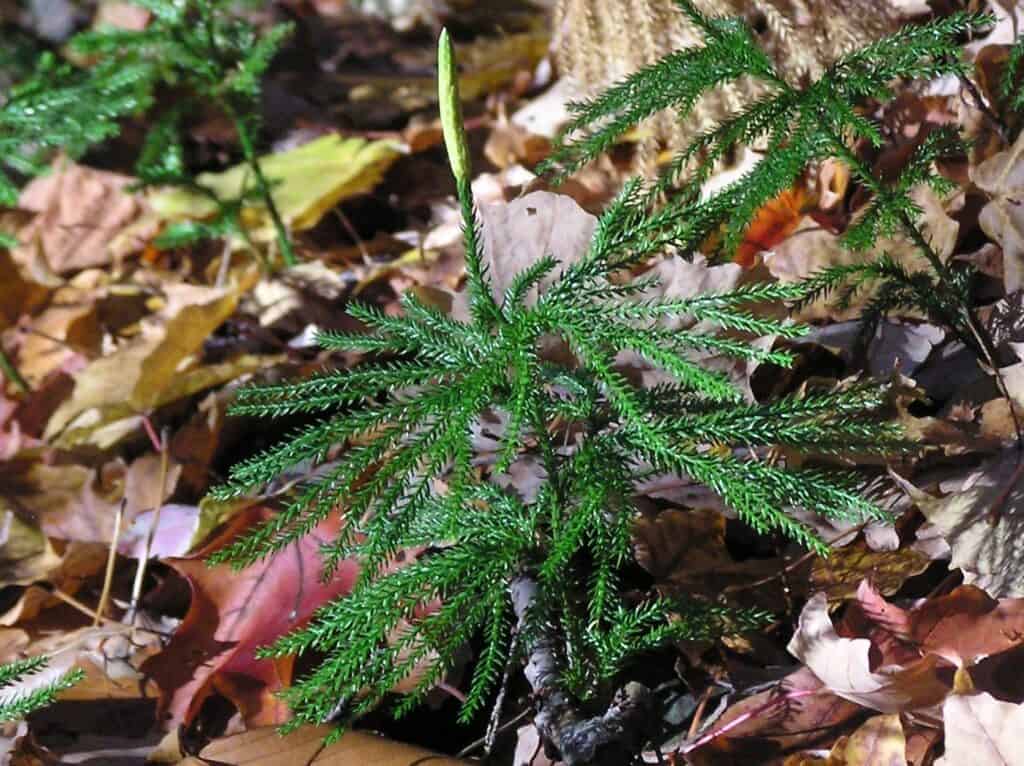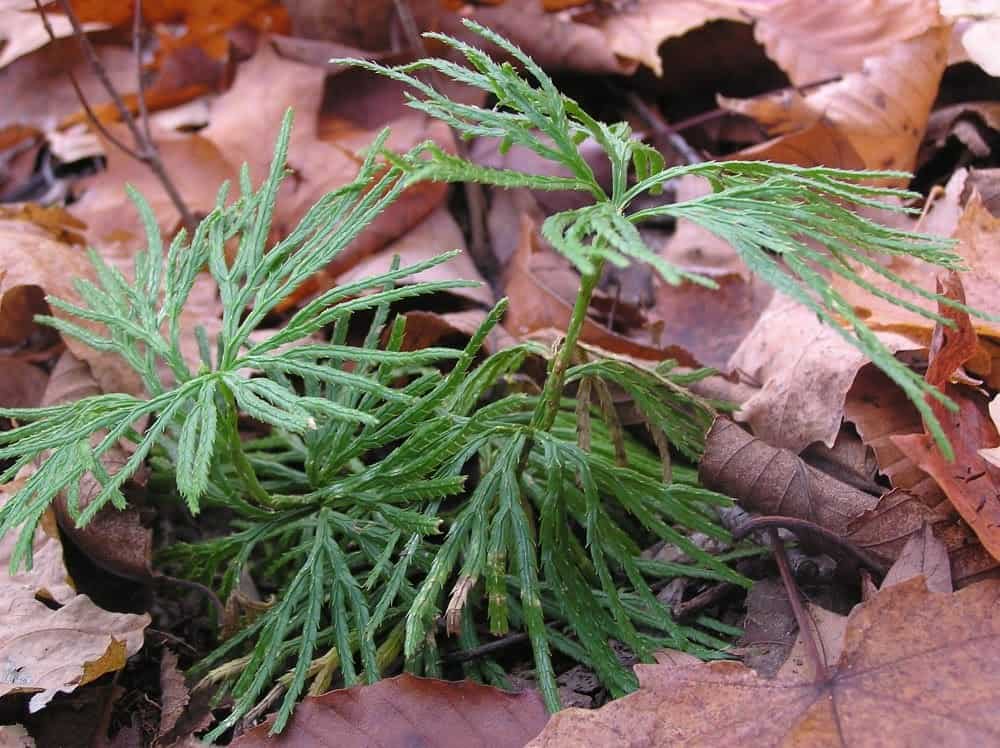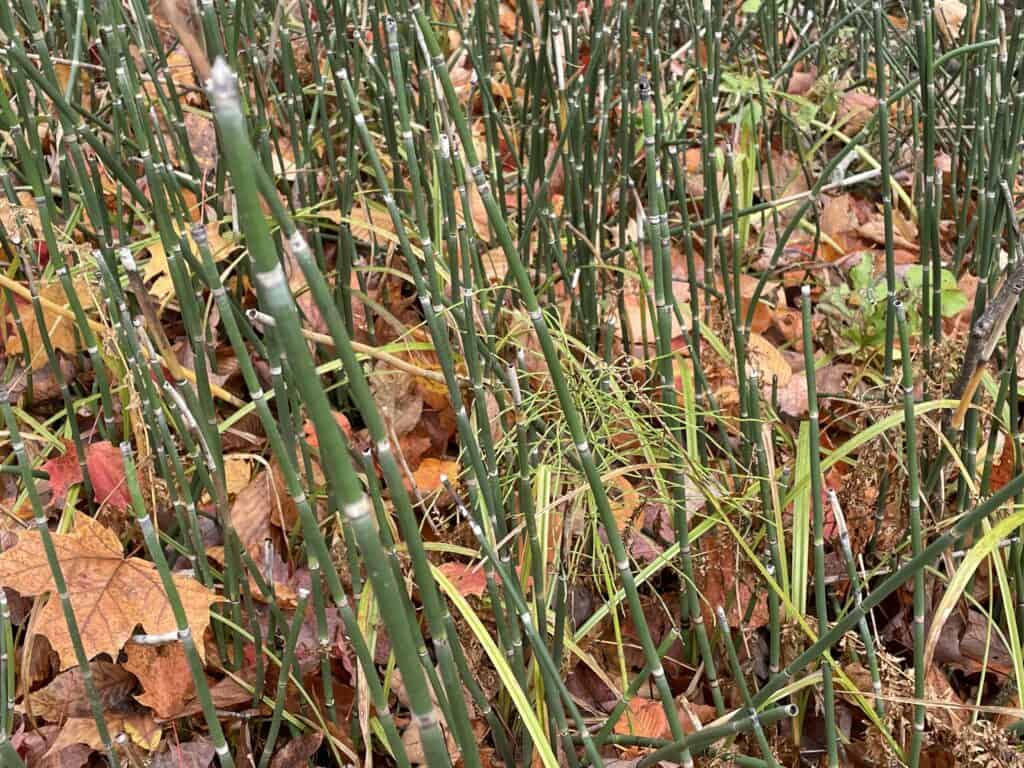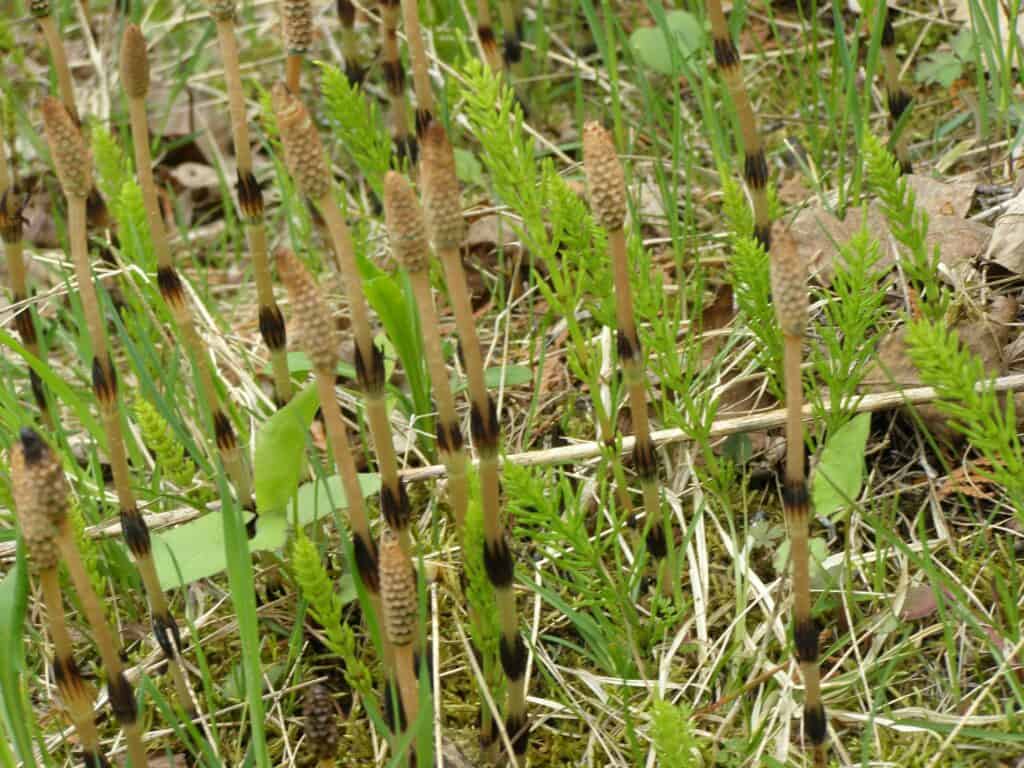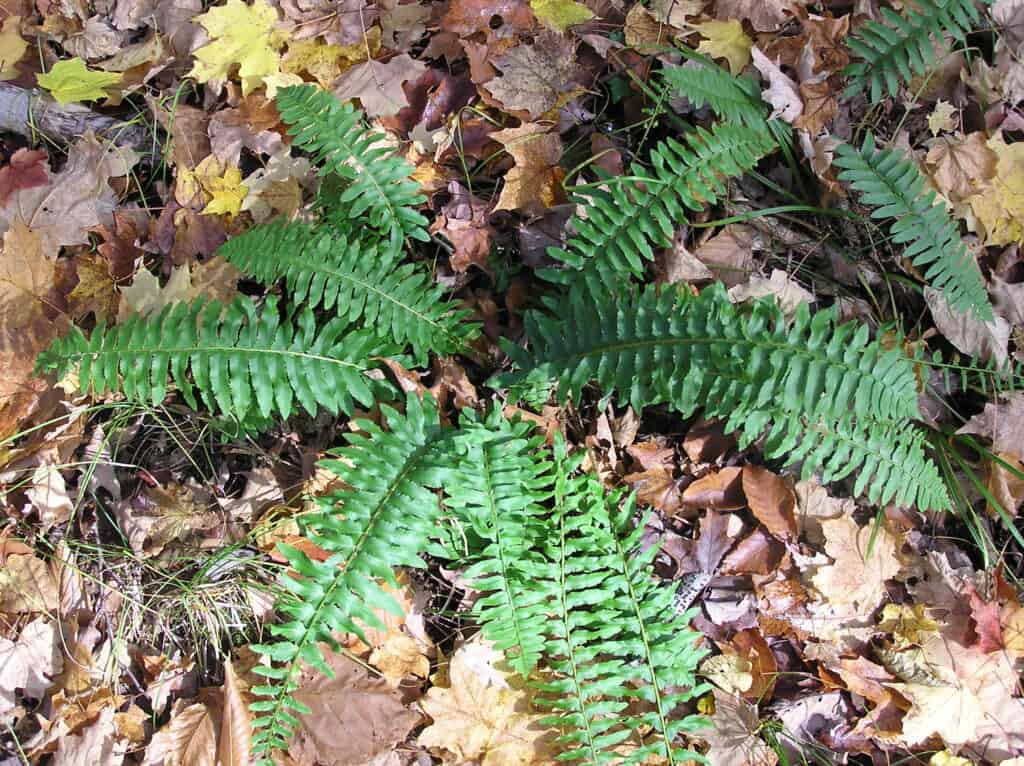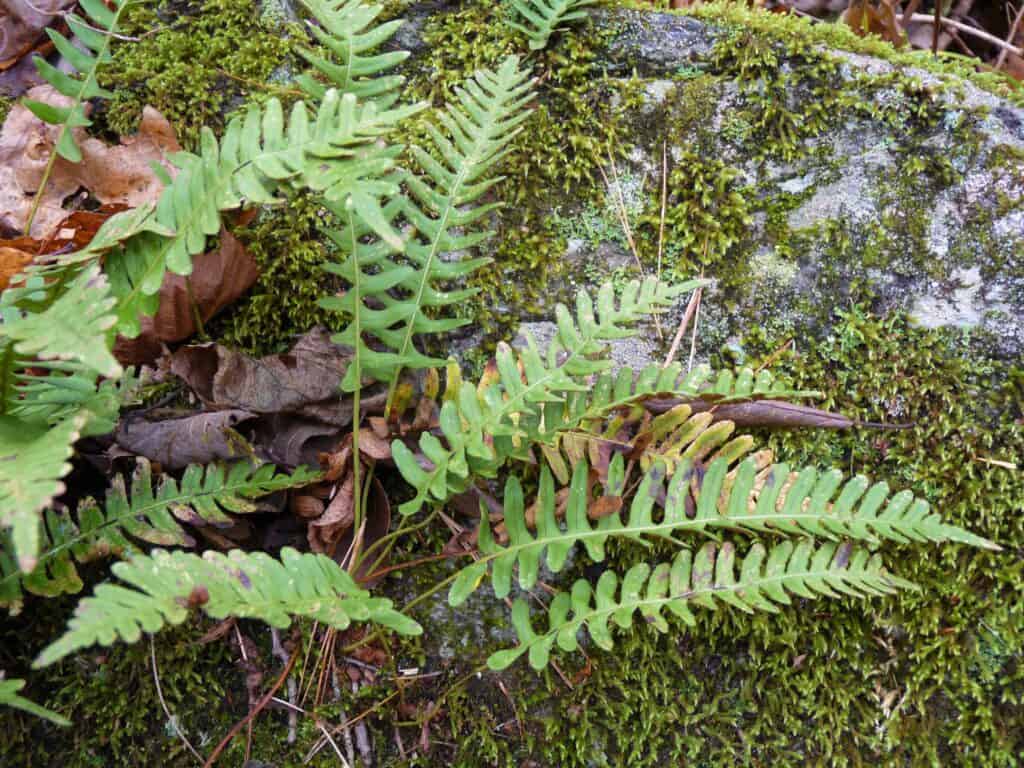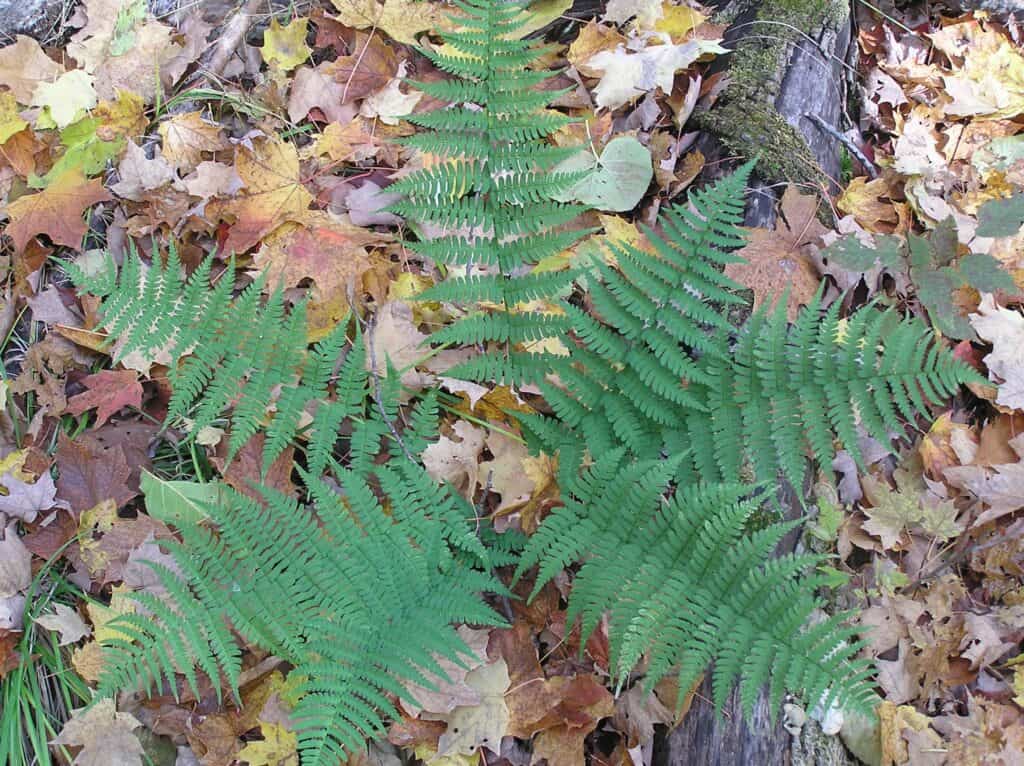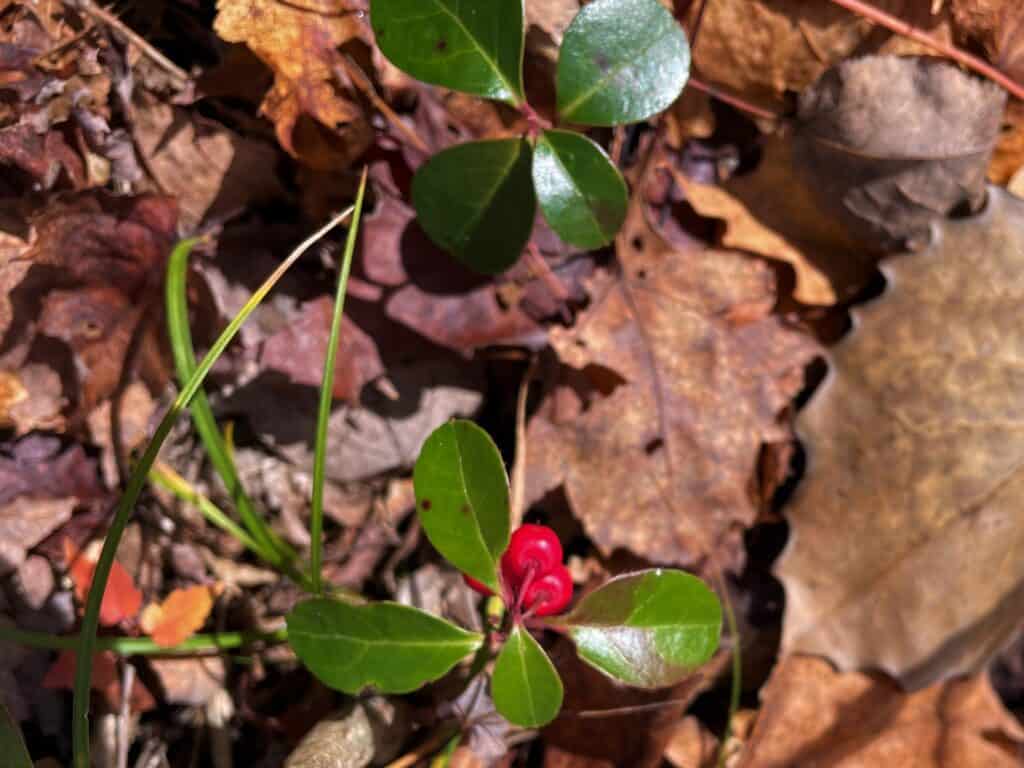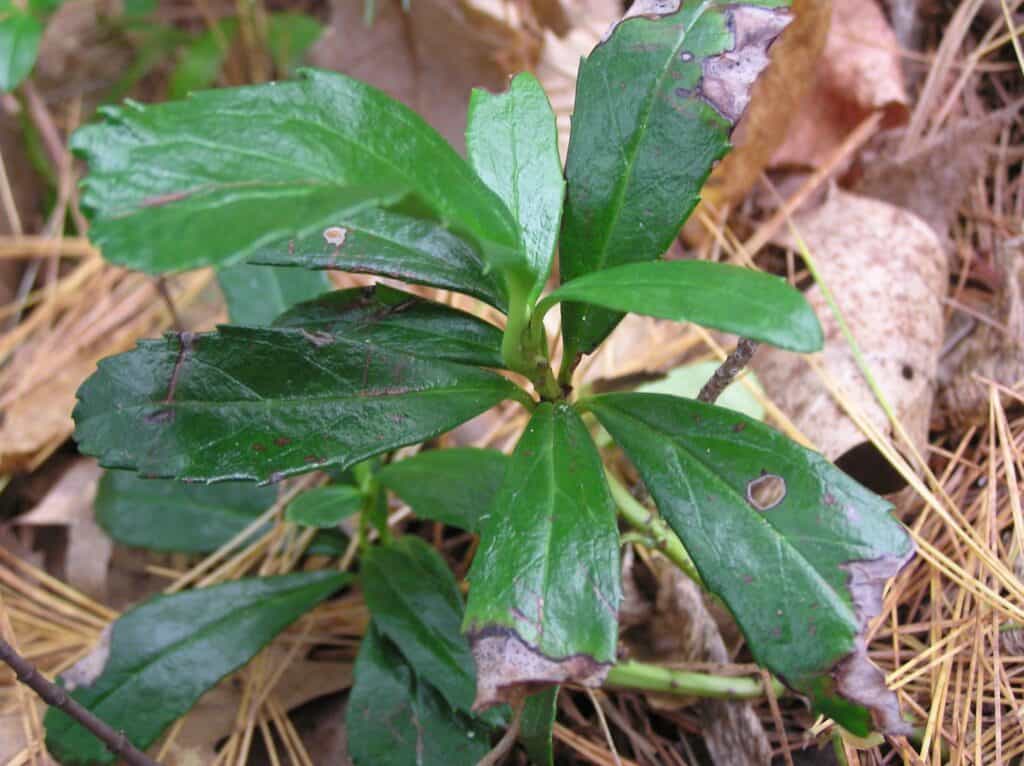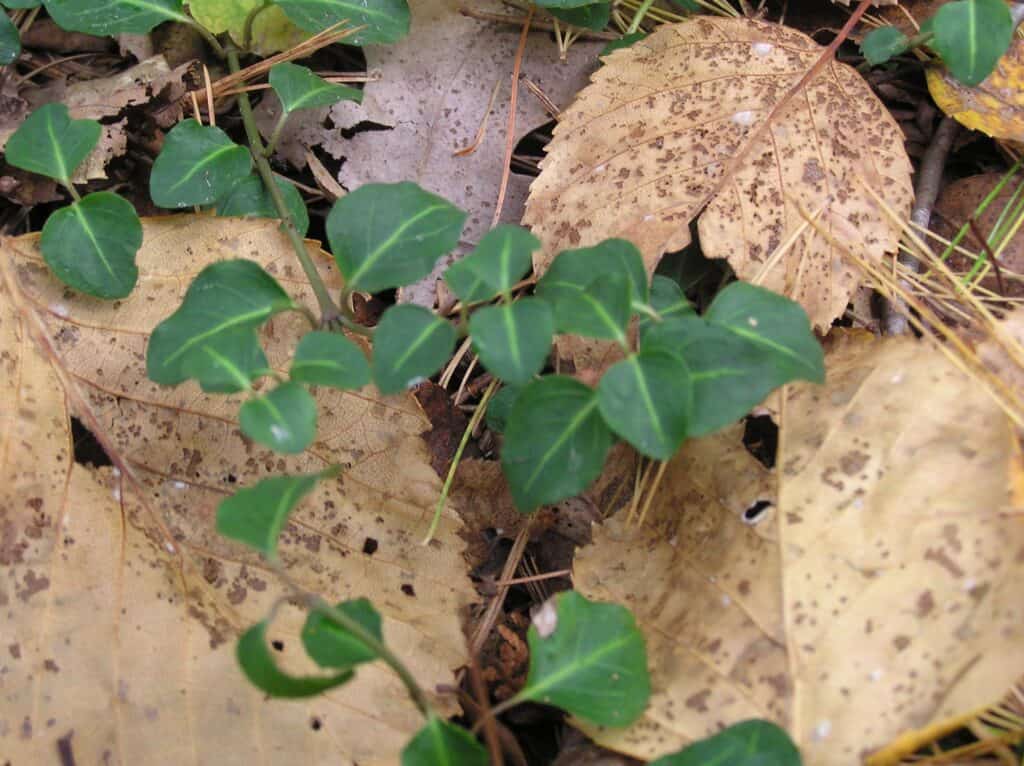Peterborough Examiner – November 5, 2021 – by Drew Monkman
The late fall forest is a joy to explore
Last week I had the pleasure of spending a couple of days at my brother’s cottage on Big Gull Lake, north of Kaladar. Located on the Canadian Shield, the flora and fauna is almost identical to that of northern Peterborough County. The cool weather and gentle, slanted November sunshine made it perfect weather to walk in the woods. I wanted to reacquaint myself with the evergreen, non-flowering forest plants that we often overlook in summer: liverworts, mosses, club-mosses, horse-tails, and ferns. Sedges and evergreen wildflowers were also on my wish list. All of these plants stand out like green beacons against the faded browns and yellows of late fall. Should you decide to take in the show, I recommend using apps like Seek and iNaturalist.
Liverworts
Inspired by some recent liverwort observations by Sue Paradisis of the Peterborough Field Naturalists (PFN), my main mission was to find some of these plants. I’d known about them for years but had never actually seen one. A former PFN member, Harry Williams, actually discovered a new species. Williams taught high school biology in Millbrook for years and was a world-recognized authority on liverworts. After considerable searching along the edges of a swamp where conifers dominated, I was thrilled to find both whipwort and wall scalewort. On Sunday, I also found snakewort in Fleming College woods.
Somewhat similar to mosses, liverworts reproduce by spores instead of seeds. However, they are much flatter. Most grow in moist environments like along the edge of creeks and wetlands, sprawling across soil, tree trunks, and rocks. “Leafy” liverworts consist of a stem with three rows of one-cell-thick, transparent leaves. “Thalloid” liverworts are flattened like pancakes and have green tissue multiple layers thick.
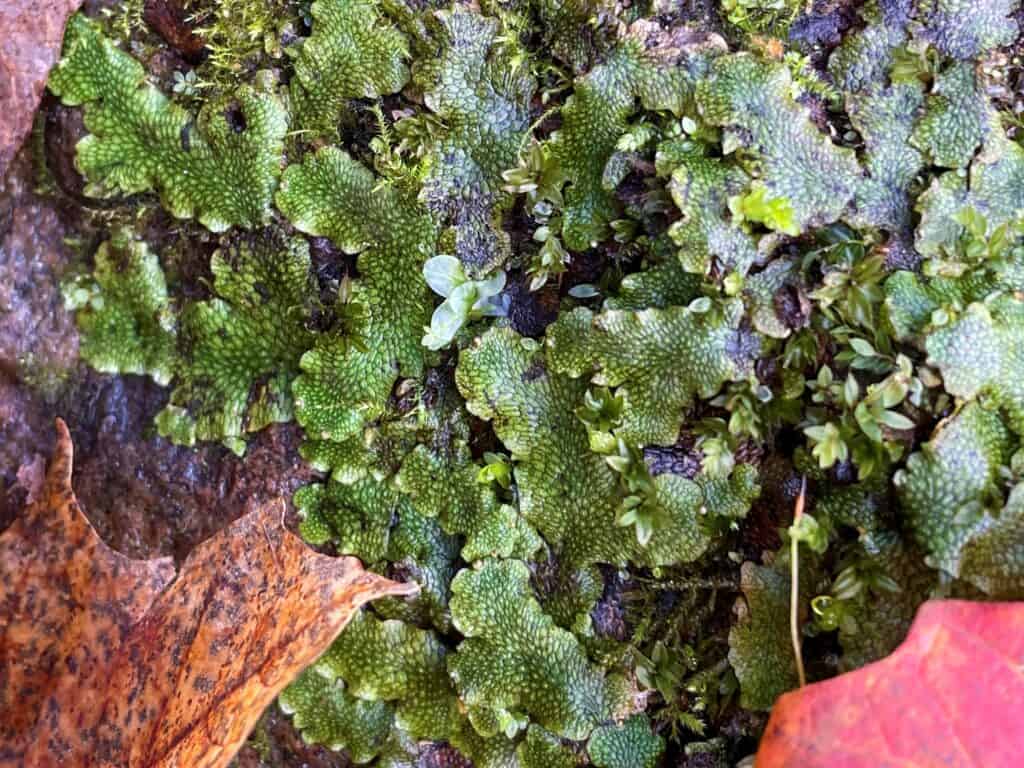
Mosses
By far the most noticeable evergreen plants in fall and winter are the mosses. Look for them on boulders, tree stumps, rotting logs, and around the base of trees. Take time to get down on your hands and knees to examine their structures carefully. It is like entering a verdant Lilliputian forest. Mosses have tiny stems and leaves, but the stems don’t actually conduct water or food. Even the rhizoid filaments that anchor the moss are not true roots.
Mosses exist in two distinct generations – the green, leafy gametophyte(the familiar green phase) and the wiry and leafless sporophyte(reproductive phase) with the capsule on top. When the capsules are ripe, millions of spores are dispersed producing new gametophytes and eventually new sporophytes.
The Kawarthas is home to dozens of species. In conifer swamps, carpet-like mats of spongy sphagnum (peat moss) often dominate. Also common are upright species like juniper and hair‑cap moss, hummock-forming species like pin cushion moss, and creeping mosses like shaggy moss.
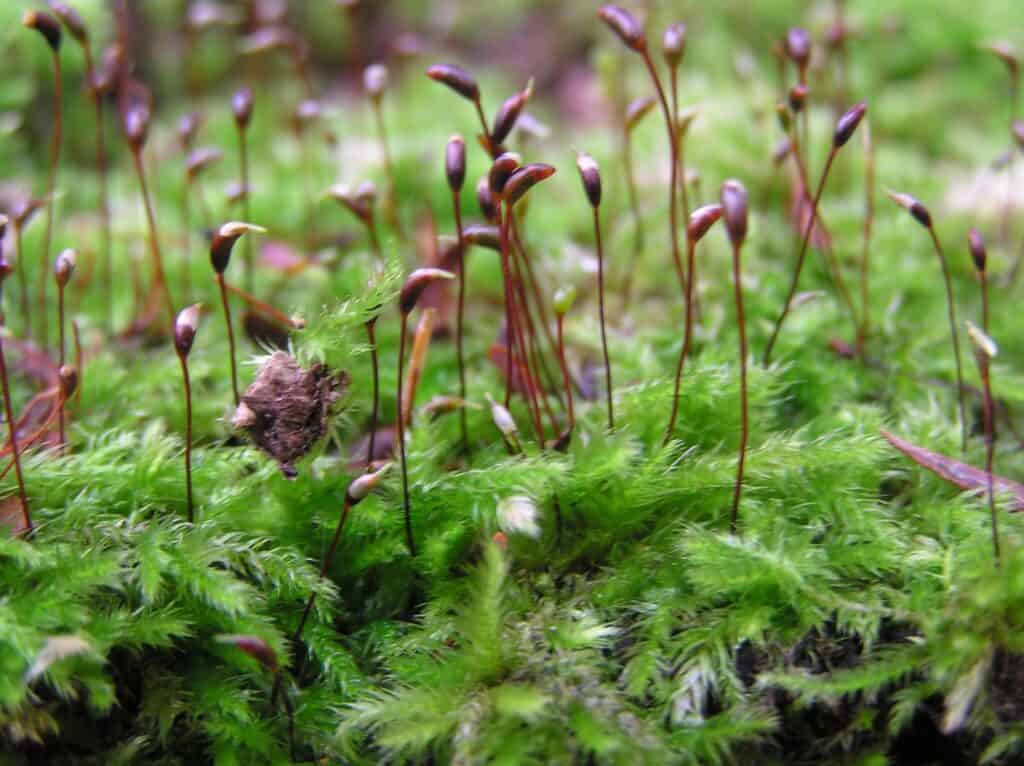
Club-mosses
Club‑mosses (Lycopodiums), which at first glance can look like tiny conifers, are also common. They usually grow in the rich, shaded soils of mixed woods. Individual plants are connected by horizontal stems. Club-mosses once grew over 30 metres tall and dominated the great coal swamps of the Carboniferous period. You can thank (or curse) them for the gasoline you burn in your car. The inflammable spores were once used in the manufacture of fireworks and as a source of illumination in early photography.
In the Kawarthas, ground‑pine club-moss (L. obscurum) is very common. It has a symmetrical shape that resembles a tiny pine tree. The spore‑bearing leaves are tightly clustered at the tip of the stem and form a yellowish, cone‑like structure. Watch, too, for ground‑cedar (L. complanatum) which closely resembles cedar leaves and wolf’s claw club‑moss (L. clavatum) which runs along the ground with widely forking stems and long-stalked cones.
Horse-tails (Equisetum)
These strange plants have ridged, segmented stems; a collar at each joint along the stem; and simple, sheath-like leaves arranged in whorls coming out of the collars (usually). A very common species is field horsetail. This small plant prefers a moist habitat but is also common along the edges of rail-trails. It remains green through late fall. In the spring, however, we see only the pinkish-beige reproductive stems with a cone-like, spore-bearing structure at the end.
Rough horse-tail is also common. Found along streams and in damp woods, it has jointed, upright stems averaging 2-3 feet tall and tiny, black-green leaves at each collar. It has so much silica in the hollow stems that it’s also known as scouring rush.
Horse-tails belong to the genus Equisetum which means “living fossil”. One hundred million years ago, they were far more diverse and up to 100 feet tall. Like club-mosses, many coal deposits contain the fossilized remains of horse-tails.
Ferns and more
Several species of ferns are also evergreen. Marginal woodfern is dark green with beautiful, widely arched crowns. Christmas ferns have leathery, spiny‑toothed leaflets, which are reminiscent of holly. A favorite of mine is rock polypody, a small fern that grows mostly on rocks and boulders in cool, shaded areas.
Coniferous and mixed forests are also home to a variety of evergreen wildflowers. Pipsissewa has glossy, dark green leaves appearing in whorls. Keep an eye out, too, for winterberry. The berries and leaves have a pronounced wintergreen taste and are pleasant to chew when walking in the woods.
Although not truly evergreen, sedges stand out at this time of year like little clumps of healthy green grass. However, unlike grasses, “sedges have edges” so check to be sure that the stem or at least the base is angular. In woodlands around Peterborough, watch for drooping woodland sedge (Carex arctata) and plantainleaf sedge (Carex plantaginea). Unfortunately, sedges are notoriously difficult to identify to the species level.
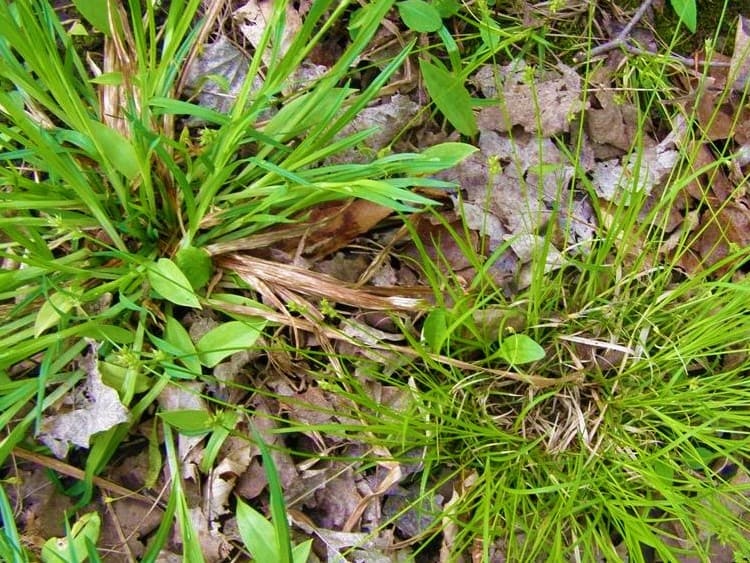
Destinations
You’ll find these plants along most any trail, especially if it has some low, damp areas. You might want to try Fleming College woods off of Brealey Drive, the Trent Wildlife Sanctuary, Mark S. Burnham Provincial Park, the Stoney Lake Trails near Viamede resort, and the Warsaw Conservation Area.
CLIMATE CHAOS UPDATE
COP 26: Although the climate summit in Glasgow has so far failed to achieve the ground-breaking emissions agreement it was hoping for, there has been progress. 1. The financial community has committed to weaning the global economy off fossil fuels. According to former Bank of England Governor, Mark Carney, the money is there and totals $130 trillion US. This includes the resources of asset managers, pension funds, banks, and insurance companies from around the world. 2. More than 100 world leaders have promised to end and reverse deforestation by 2030. The countries who have signed the pledge include Canada, Brazil, Russia, China, Indonesia, the Democratic Republic of the Congo, and the US. Together, they represent 85% of the world’s forests.
EVENTS: On Nov. 8, at 7 pm, I will be speaking at 4RG Meets on how climate change is affecting nature in the Kawarthas. 4RG Meets are monthly meetings for anyone seeking an understanding and effective response to the climate crisis. Each meet consists of a 25 minute presentation followed by a question period. Email 4RGmeets@gmail.com for a Zoom link.
TAKE ACTION: To see a list of ways YOU can take climate action, go to https://forourgrandchildren.ca/. Click on “This Month’s Action” or “Find Another Action for Today.”
REMEMBER: To avoid climate catastrophe, we must limit global heating to 1.5 C. We’re at 1.1 C. Emissions are still increasing, and we’re heading to 2 C by 2050. A key measure of progress is how much CO2 in parts per million (ppm) is in the atmosphere and if it’s climbing or dropping. The highest safe level is 350 ppm.
